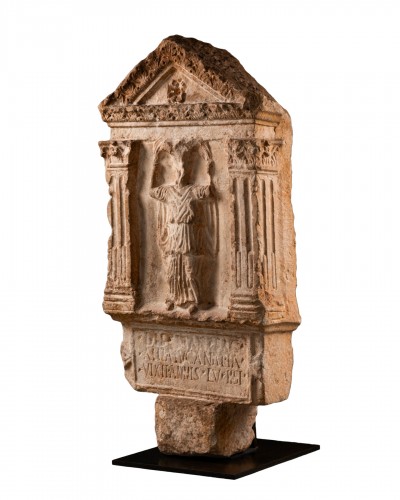Réf : 112179
SOLD
Stone funerary stele - Roman Empire
This magnificent Roman-era funerary stele takes the form of a Greco-Roman temple.
Richly decorated, the stele comprises three distinct parts:
The first is the main composition, set in a temple décor. The triangular pediment is decorated with a frieze of palmettes. A four-petal flower marks its center. Underneath is a blank, uncarved frieze of metopes. Two columns in relief support the structure. They are composed of a rather schematic Corinthian capital, a carved pillar and an imposing base.
Between the two columns, and thus at the center of the architectural composition, is a female figure with raised arms. [...]
